Acoustic Mesh
![]()
Description
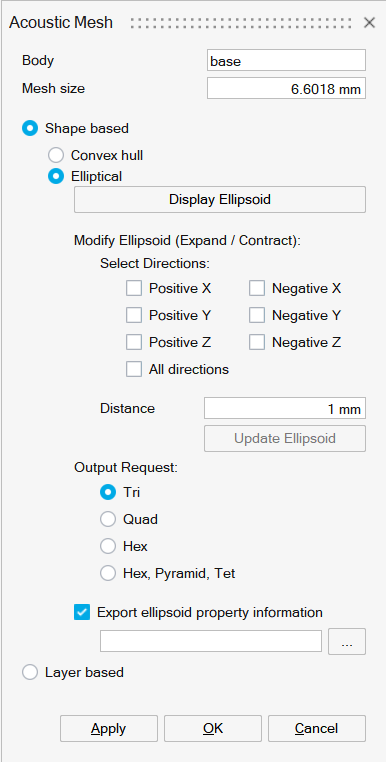
The Acoustic mesh tool creates the mesh for acoustic Modeling.
Convex hull
Acoustic mesh tool added to generate layers of tetra mesh for acoustic analysis. Convex shape is ensured for outer most surface.
Example for Convex hull
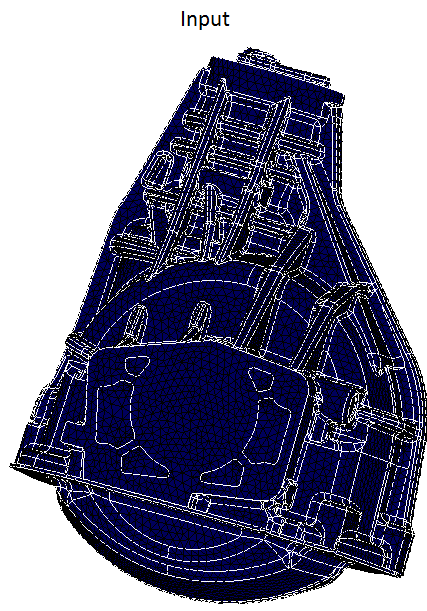
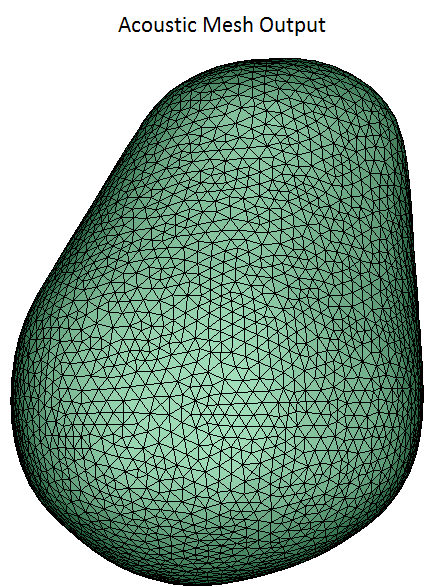
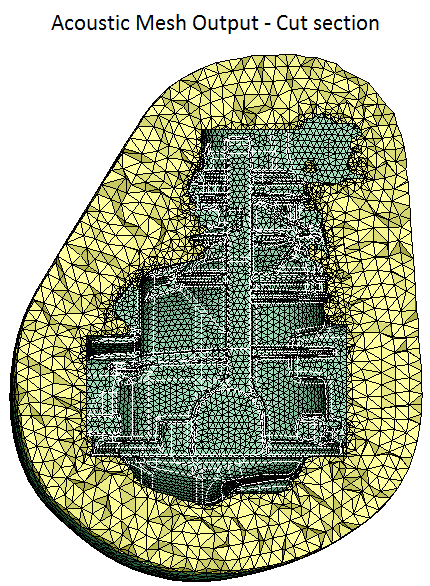
Elliptical
This option is used to create the smallest ellipsoid by volume that will enclose a body. User can change the dimension of the ellipsoid by giving offset distance along six directions. This is useful for acoustic modelling where an ellipsoid is to be created which encloses the solid.
Display EllipsoidUser can visualize the ellipsoid virtually by clicking this button.
Modify Ellipsoid (Expand / Contract)- The user can select any direction along which the ellipsoid has to be modified by moving the extreme points of the ellipsoid. As the ellipsoid extremes are moved, the centre also moves to maintain the ellipsoidal shape. The user can select multiple directions, or all directions.
- Distance: The user can specify the offset distance by which the ellipsoid has to be modified.
- Tri: Ellipsoid surface will have Tri elements.
- Quad: Ellipsoid surface will have Quad elements.
- Hex: Hex elements will be created from the ellipsoid surface towards the input body up to a point where the distance between the hex and surface of the input body is equal to the user given mesh size.
- Hex, Pyramid and Tet: Hex elements will be created from the ellipsoid surface towards the input body up to a point where the distance between the hex and surface of the input body is equal to the user given mesh size. Then one layer of pyramid elements will be created which is followed by the creation of Tet elements upto the input body.
It will write the ellipsoid property information in the user specified text file.
Steps- Select an input FEM body.
- Enter the mesh size.
- Click on the Display Ellipsoid button.
- Select the direction to modify the ellipsoid.
- Input the maximum offset distance.
- Click on the Update Ellipsoid button.
- Click Apply/Ok for creating ellipsoid.
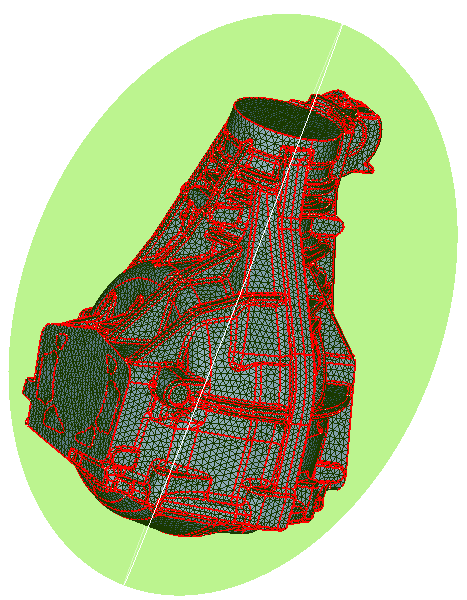

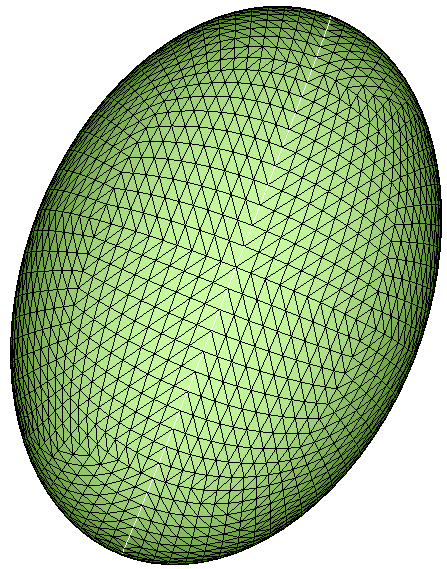
Output for Quad
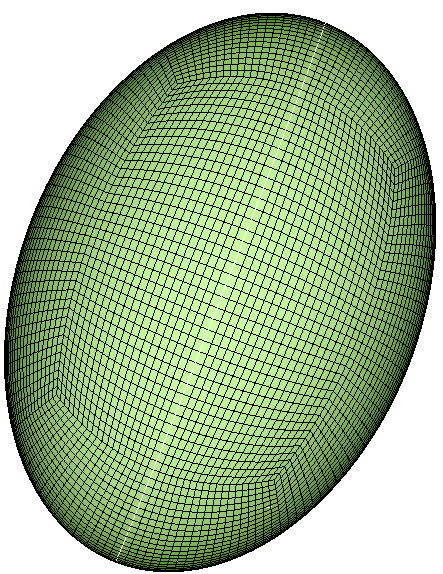
Output for Hex
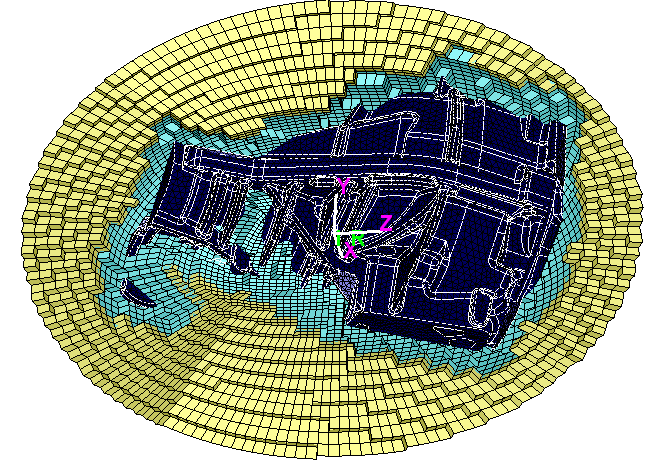
Output for Hex, pyramid and Tet
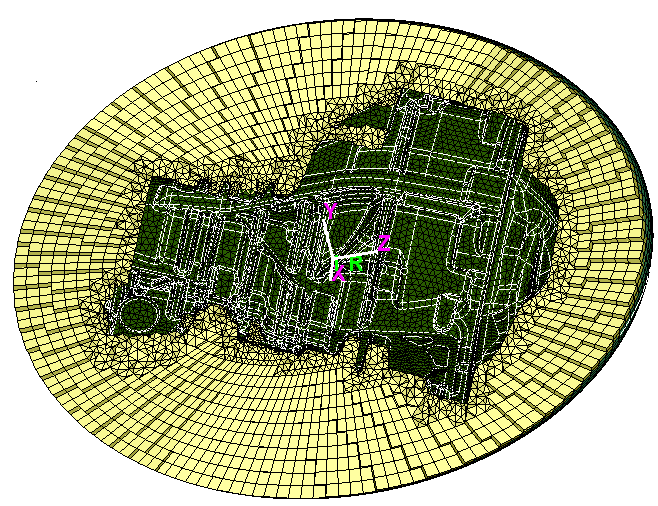
Layered acoustic mesh
This option is used to create Layer mesh with defined number of layers enclosing the given body. The user can also modify the number of Tet layers created in each layer. This type of mesh is required in e-motors - sound absorption analysis.
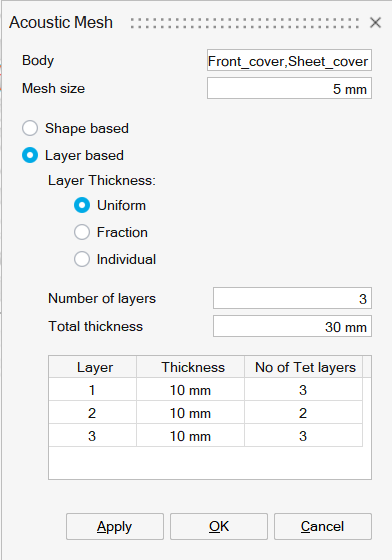
Mesh size
Mesh size is the average element size. It will be calculated automatically and updated in the dialog.
Layer Thickness
- Uniform: When thickness is defined using this option, the thickness value will be distributed equally among the layers.
- Fraction: You can enter the fraction of the total thickness in all the layers. The sum of all the fractions should be equal to one.
- Individual: The absolute thickness value can be entered for individual layers. Total Thickness will be disabled in this option.
Number of layers
The number of layers required along the thickness.
Total thickness
It is the summation of individual layer thickness.
Layer
It indicates the order of the layers. For example, if the specified “number of layers” is three, the layer will be 1, 2, and 3. Layer 1 is the first layer created closer to the input bodies and the remaining layers (2 and 3) will be subsequently created outwards from it.
Thickness
It specifies the thickness of each layer. For uniform layer thickness, the specified total thickness will be equally distributed in each layer. The layer thickness need to be specified for fraction/ individual.
No of Tet layers
The number of Tet layers to be created in each layer along the thickness.
Example
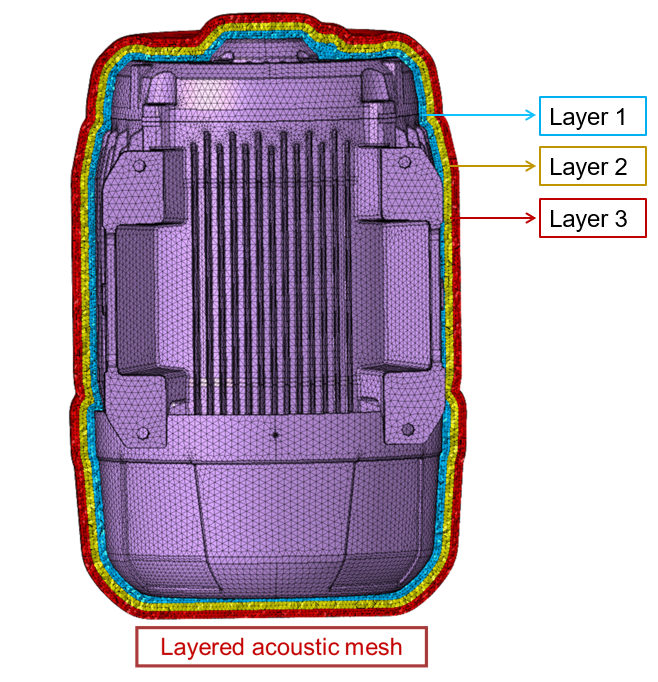
- The input bodies should not have any leaks.
- By default tet4 element layers will be created.